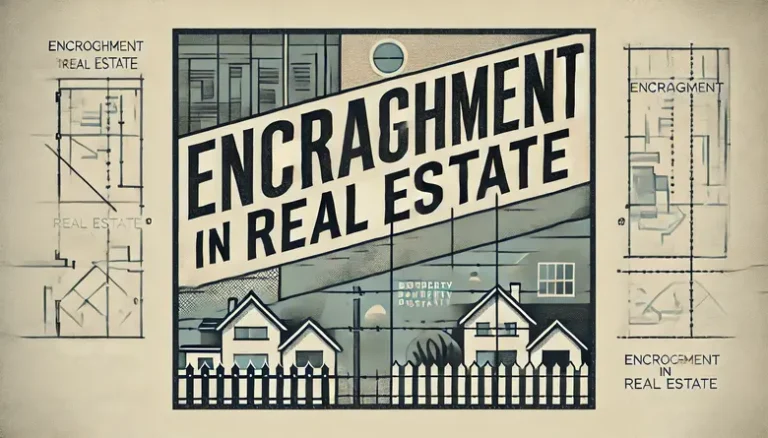
Do you understand how real estate encroachment affects your property rights?
Encroachment can lead to lower property value, legal disputes, and title complexities. Knowing the distinctions between encroachment, easements, and encumbrances is vital.
Take proactive steps like surveys, neighbor discussions, and legal recourse to prevent and resolve encroachment issues efficiently. Acting promptly can help you avoid costly legal battles and maintain good neighborly relations.
Learn more about encroachment’s definition, consequences, and protective measures in this article.
Types of Encroachment
What is encroachment? Identifying the various types of encroachment is crucial in understanding property boundary violations. Real estate encroachment can take different forms, such as intentional or unintentional encroachment onto neighboring properties. When structures extend beyond property lines, it constitutes encroachment, which can lead to legal disputes and decreased property value.
Recognizing what encroachment entails is vital to protecting your property rights and maintaining clear boundaries. Whether it involves a fence, building, or any structure infringing on another’s land, being aware of encroachment helps in addressing the issue promptly.
Knowing the types of encroachment ensures that you can take proactive steps to prevent complications and maintain good relations with your neighbors.
Implications of Encroachment
Understanding the implications of encroachment on your property can help you navigate potential legal disputes and safeguard your asset’s value. Encroachment can lead to decreased property value, title issues, and difficulties when selling your home. It may result in encumbrances, affecting your property rights and potentially leading to legal actions.
Resolving encroachment issues often involves removing structures, legal proceedings, or amicable settlements. Taking proactive steps such as conducting land surveys for boundary clarification, communicating with neighbors, and seeking legal advice can prevent escalation and protect your property.
Addressing encroachment promptly is crucial to avoid complications, maintain clear boundaries, and ensure peace of mind regarding your property’s integrity and value.
Key Differences Among Encroachment, Easement, and Encumbrance
In real estate, differentiating between encroachment, easement, and encumbrance is essential for property owners.
Encroachment refers to unauthorized intrusion onto a neighbor’s property, often involving structures.
Easements, on the other hand, are consensual agreements for land use, which may include compensation. Prescriptive easements can result from continuous encroachment over time.
Encumbrances, however, are claims against a property by someone other than the owner, potentially leading to legal rights for the encroacher.
Understanding these distinctions is crucial for navigating property boundaries, legal rights, and potential disputes. By recognizing the key differences among encroachment, easement, and encumbrance, property owners can better protect their interests and maintain clear boundaries.
Handling Encroachment Outcomes
Dealing with encroachment outcomes requires careful assessment and decisive action. Once an encroachment is identified, it’s crucial to determine the best course of action promptly.
If the encroachment is minor and both parties are amenable, reaching a mutual agreement can lead to transforming the encroachment into a formal easement.
However, in cases of significant encroachments that can’t be resolved amicably, legal action may be necessary. This can involve seeking court intervention to address boundary disputes, remove encroaching structures, or determine land rights.
Strategies for Preventing and Resolving Encroachment Issues
To prevent and resolve encroachment issues effectively, prioritize proactive measures and clear communication with neighbors. Conduct a land survey to establish boundaries. Communicate openly with neighbors to address potential boundary disputes early on. Consider selling easements if necessary. Seek legal advice promptly if issues arise, as legal action might be required to protect your property rights.
Emphasize the importance of maintaining clear boundaries to prevent conflicts from escalating. Utilize mediation and physical barriers as preventive measures.
Conclusion
You now have a clear understanding of encroachment in real estate and the importance of protecting your property rights.
By being proactive and taking the necessary steps to prevent and resolve encroachment issues, you can avoid costly legal battles and maintain good relations with your neighbors.
Remember, timely action is crucial in ensuring peace of mind and preserving the value of your property.
Stay informed and prepared to protect your property rights effectively.